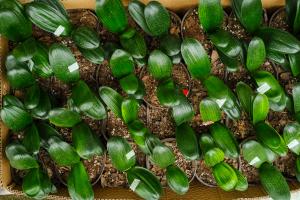What is Water Potential in Plants?
Water potential is a term used to describe the tendency of water to move from one place to another in plants. It is the measure of the potential energy of water molecules in a system relative to pure water at atmospheric pressure and temperature. Understanding water potential is crucial for studying plant physiology, plant water relations, and the transport of water and solutes in plants.
Components of Water Potential
The water potential of a system is made up of two components: pressure potential and solute potential. Pressure potential is the potential energy of water molecules due to hydrostatic pressure or tension, and it can be either positive or negative, depending on the pressure exerted on the water. Solute potential is the potential energy of water molecules due to the presence of solutes. When solutes are present in a system, water moves from areas of higher water potential to areas of lower water potential to equalize the solute concentration.
Measuring Water Potential
Water potential is measured using a variety of techniques, including pressure chamber, thermocouple psychrometer, and vapor pressure osmometer. The pressure chamber method involves measuring the pressure required to stop water from leaving a plant tissue sample. The thermocouple psychrometer measures the difference in temperature between a dry and wet thermocouple to determine the water potential of a sample. The vapor pressure osmometer determines the water potential of a solution by measuring the change in vapor pressure of the solution relative to pure water.
Importance of Water Potential in Plants
Water potential is crucial for understanding plant water relations and the transport of water and nutrients in plants. Plants take up water from the soil through their roots, and water moves through the plant from areas of higher water potential to areas of lower water potential. Understanding water potential helps scientists to understand how plants can maintain turgor pressure and how they can transport nutrients and other solutes against the concentration gradient.
Factors Affecting Water Potential
Water potential is affected by a number of factors, including temperature, pressure, solute concentration, and physical barriers. Temperature affects water potential by changing the kinetic energy of water molecules, which affects their potential energy. Pressure can affect water potential by changing the hydrostatic pressure or tension of water molecules. Solute concentration can affect water potential by creating an osmotic gradient between two solutions. Physical barriers, such as cell walls, can affect water potential by creating a barrier to water movement.
Conclusion
Water potential is a crucial concept in plant physiology, plant water relations, and the transport of water and nutrients in plants. It is a measure of the potential energy of water molecules in a system relative to pure water, and it is affected by a number of factors. Understanding water potential is important for understanding how plants can maintain turgor pressure, transport nutrients and solutes, and survive in different environmental conditions.

 how many times do yo...
how many times do yo... how many planted tre...
how many planted tre... how many pine trees ...
how many pine trees ... how many pecan trees...
how many pecan trees... how many plants comp...
how many plants comp... how many plants can ...
how many plants can ... how many plants and ...
how many plants and ... how many pepper plan...
how many pepper plan...





























